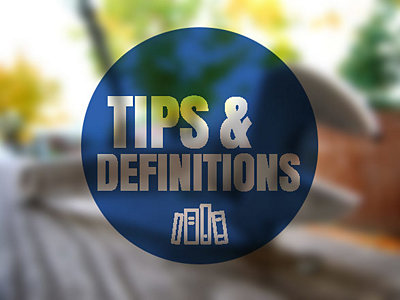How Many Lumens Do I Need For Outdoor Lighting?
“Lumens” measures the intensity of light. So, the amount of lumens you need for your outdoor lighting really depends on the kind of outdoor lighting you want.
That said, our professional suggestion on lumens for various outdoor lights includes:
- Path lighting:100-200 lumens
- Step lights: 12-100 lumens
- Flood lights: 700-1300 lumens
- Motion sensor lights: 300-700 lumens
- Pond/pool lights: 200-400 lumens
- Hardscape lights (on walls): 50-185
- Landscape: 50-300 lumens (50 is good for a garden or small shrubbery)
If you’re considering outdoor lighting, seriously consider LED
Homeowners really only have two options when it comes to the type of lightbulb to purchase for outdoor lighting:
- LEDs
- CFLs
Our professional suggestion is to go with LED lights. We’ll explain the difference between the two and why you should choose LED lighting.
LED’s vs CFL’s for outdoor lighting
How they work:
- CFLs (Compact Fluorescent Light) use an electrical current to heat up a filament inside the bulb. When the filament fully heats up it becomes white-hot which produces light and heat. Because of the sensitivity of the filament inside the bulb, a CFL’s lifespan is cut short if it’s left in extreme hot or cold ambient temperatures (i.e. Florida’s summer temperatures). These lightbulbs also take a while to fully light up.
- LEDs (Light Emitting Diodes), on the other hand, don’t use fragile filaments. They do use electrical current, however, that illuminates tiny diodes inside the bulb. LEDs don’t put out much heat, staying cool to the touch. They also fare well in all types of outdoor temperatures and become fully bright immediately.
Operational cost:
LEDs cost less to operate than CFLs. In fact, LEDs use 50% less energy than CFLs to produce the same amount of light. This means LEDs produce the highest amount of lumens per wattage consumed of all light bulb options.
Lifespan:
LEDs last up to 5 times longer than CFLs.
Price:
Currently, most CFLs are cheaper to purchase than LEDs. However, in the last couple of years, prices have been dropping on LED bulbs, making some more affordable than CFLs.
Also consider…
1. Lux.
This measures the amount of light per square meter. Basically, it gives you an idea of the size of the area a light can illuminate. Lux is important as it tells you how many bulbs you’ll need to cover a particular area.
To give you an idea: 1 lux is equal to how much illumination a single candle can provide from approximately 3 feet away.
2. Wattage.
This measures the amount of electricity a light bulb consumes. For example, a 100-watt bulb consumes 100 watts of electricity every second it is on. The higher the wattage, the more electricity you’ll pay for.
If you have a lot of outdoor lights to install (i.e. a high wattage demand), you may need an electrician to install a new circuit.
Questions concerning your outdoor lighting choices? Ask a FL electrician
If you have questions about how to choose and set up your outdoor lighting, we can help.
We’re experts when it comes to landscape and exterior lighting design.
If you need professional landscape and exterior lighting installation, just contact us. We serve Tampa Bay, Sarasota-Bradenton, Central Florida, and SW Florida with professional electrical and lighting installation services from our locations in Tampa, Orlando, Sarasota, and Naples.
